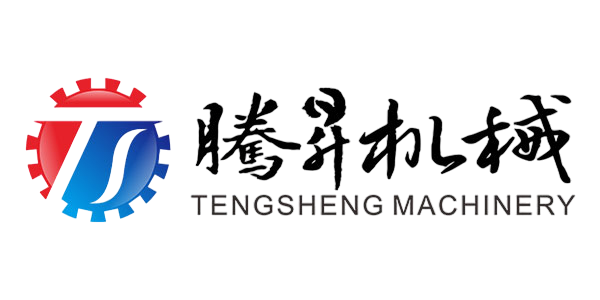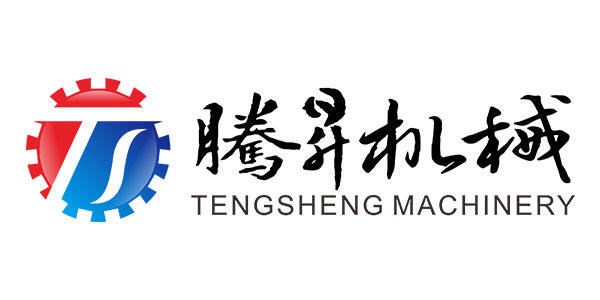Getting better at protein recovery has become a game changer for many meat processors, especially when using precision grinding systems. Some operations report getting as high as 98% recovery rates when everything works just right, which beats out old school methods by a long shot. Meat plants used to lose so much valuable protein during processing that it really cut into profits. Modern grinding tech helps keep those proteins intact while also speeding things along on the production line. According to several industry reports from places like Tyson Foods and Perdue Farms, companies investing in these precision tools see real money saved down the road simply because there's less waste going into landfills. For forward thinking meat processors looking to stay competitive, upgrading to these systems isn't just smart business it's practically necessary nowadays.
Keeping product quality steady matters a lot when it comes to what customers expect from their food products. Precision grinding plays a big role here since it creates those uniform particles that stop any weird textures or off flavors from showing up. Studies point to something pretty clear actually consistent grinding techniques cut down on spoilage because they keep the meat intact longer, which means products stay fresh on shelves much better than before. For companies working with everything from raw cuts to fully cooked items, getting this right through proper grinding practices makes all the difference in stabilizing what ends up on store shelves. When manufacturers invest in good grinding tech, they're not just making sure every batch tastes the same they're building trust with shoppers who want reliable results week after week. That kind of consistency builds real loyalty over time.
The efficiency of meat shredders tends to hold things back in busy meat processing plants where volumes are through the roof. Today's precision grinders handle massive amounts of product much faster than older models, which definitely helps boost production speed across the board. Some research shows new shredding tech can actually crank out 30% more meat per hour, something that matters a lot as distributors and shoppers want more stuff, faster. People just keep buying more ready-to-eat meals these days, so companies need to get serious about upgrading their shredding equipment if they want to stay ahead of the game. Getting those upgrades makes sense both for keeping up with what customers want now and for handling whatever comes next in this ever-changing market.
How blades are designed really matters when it comes to getting good results from grinding systems, especially since meats vary so much between things like chicken and beef cuts. Better shaped blades just work better at cutting through stuff, something that makes all the difference when trying to get uniform quality across batches. Some specific blade shapes actually put less stress on the motor parts, meaning machines last longer before needing repairs or replacements. Meat processing plants find this particularly helpful because they can tweak their blade setups based on what kind of meat they're working with that day. This adaptation leads to better yields overall while also reducing how much gets thrown away at the end of production runs.
The variable speed motor tech has become pretty essential for those high performance grinding setups these days. What makes them stand out? Well, they let meat processors tweak the speed depending on what kind of product they're working with, which really makes a difference in the final cut quality. When operators can fine tune the power based on actual needs, it cuts down on wasted electricity. This matters a lot for companies trying to keep costs down while still being green. Industry reports show that when plants switch to these variable speed systems, they get more flexibility day to day and their machines last longer too. Less downtime means money saved over time, plus there's definitely an environmental benefit from using less power overall.
Keeping things clean remains absolutely critical in meat processing plants if they want to ensure safe food production and maintain good product quality. Modern grinding equipment built with easy cleaning features helps cut down on bacteria buildup, which makes it easier to meet health regulations. Many of these hygienic design approaches actually come recommended by major food safety organizations because they work so well at protecting what goes into packaging. Meat processors who spend money on better hygiene solutions aren't just checking boxes on inspection reports either. These investments build real confidence among shoppers who care about where their meat comes from, ultimately helping companies protect their brands and keep customers coming back week after week.
Fat separation techniques are changing how meat processors work when they want to get the most edible product possible. When fats are properly separated out during processing, there's just less waste overall and more meat ends up being usable for consumers. Some studies have found that good fat separation methods can actually boost edible output around 20 percent, which really affects bottom line numbers for operations. These days, many meat plants are investing in specialized equipment specifically built for this kind of fat removal process. As these machines become more common across the industry, we're seeing processing plants run smoother while getting better yields from every animal processed through their facilities.
Keeping things at just the right temperature when grinding and processing frozen meat matters a lot for maintaining quality and getting the most out of each batch. When temps fluctuate too much, the meat starts to degrade, which means lower quality products that don't last as long on store shelves. Good temperature control tech really helps cut down on thawing time while making sure what ends up on supermarket counters meets those strict quality checks everyone demands these days. Research shows there's a clear link between careful temperature management and less spoilage overall. This not only makes the meat last longer but also gives processors an advantage over competitors who might be cutting corners somewhere else in their operations.
When automated sorting tech gets paired with grinding systems, meat processing plants see major gains in both efficiency and accuracy across their operations. These upgrades let plant managers run separate production lines for various cuts of meat, which means better control over quality standards and more consistent outcomes from batch to batch. The machines just work faster than people can, cutting down on waste while reducing mistakes that happen during manual handling. Industry studies indicate robots sort meat products about 30% quicker than humans, with fewer errors too something that matters a lot when dealing with thousands of pounds of product daily. For meat processors looking to stay ahead of competitors, investing in these kinds of automated solutions isn't just smart business it's almost necessary if they want to keep up with modern industry expectations around speed and consistency.
When processors invest in precise equipment and cutting edge tech, they see real improvements in their product yields. This means better profits for sure, but it also helps them keep up with what customers expect these days regarding quality. Fat separation methods, tight temperature management during processing, and smart sorting systems are just some ways companies boost their bottom line while maintaining consistent output. The meat processing industry is getting tougher all the time, so those who adopt these efficiency measures tend to stay ahead of the curve and grow sustainably over the long term.
The QH-50 Meat Cutter was built with one main goal in mind: precise slicing across different types of meat while cutting down on waste and keeping slices uniform in thickness. What makes this machine special? It has laser guided tech inside that really boosts both accuracy and how fast things get done. For anyone running a top notch meat processing operation, this kind of precision matters a lot. Real world tests show that businesses using the QH-50 see their labor bills drop and production numbers go up. Some butchers report being able to handle twice as much product per shift after switching to this system. The consistent cuts mean less time spent sorting through uneven pieces, so operations run smoother day after day.
When dealing with big volume meat processing operations, the TS-JR42B Vertical Meat Grinder stands out as a workhorse capable of handling serious mincing demands. Built tough from quality materials, this machine keeps going without breaking down, no matter what kind of meat comes through the hopper beef, pork, chicken you name it. Many processors who have switched to the TS-JR42B report noticeable improvements in their daily output thanks to those clever design elements that make grinding faster and cleaner. What really sets it apart though is how durable everything feels even after months of constant use, plus nobody complains about the straightforward controls and easy maintenance access. That's why so many butcher shops and food manufacturing plants keep coming back to this model year after year.
The TS-Q115C Cooked Meat Slicer delivers serious cutting power for businesses in the food service world. Delis and restaurants love how easy it is to operate, plus they can adjust the slicing thickness to match different types of meats. The machine has all sorts of safety features built right in too. Many operators report better sales after getting one of these machines because customers just look at those perfect slices and say wow. They also mention less waste since everything gets cut evenly. For anyone running a busy kitchen or butcher shop, this slicer stands up day after day under heavy use without missing a beat.
AI powered yield prediction systems are changing how meat processing works across the board, really setting a whole new benchmark when it comes to getting accurate results fast. What these smart systems do is analyze all sorts of data points so meat processors can predict what they'll get out of their operations with pretty impressive accuracy. That means better decisions about when to process and less wasted product overall. Industry numbers suggest that companies using AI for yield predictions see their forecasting abilities jump by around 30 percent or more. And let's face it, better forecasts translate directly into money saved. When plants know exactly what they're going to produce, they avoid buying extra stuff they don't need while making sure resources get used where they matter most throughout the operation.
Energy efficiency in grinding mechanisms matters more than ever these days, especially since manufacturers are looking for ways to go green. New tech developments in this field actually manage to cut down power usage while still keeping production speeds and product standards intact. Some recent improvements in grinding tech have shown real promise, with reports indicating around a 20% drop in energy bills for certain operations. That makes sense both from a cost standpoint and environmental perspective. With governments tightening their grip on energy regulations worldwide, companies that jump on board with these efficient systems now will find themselves better positioned for what's coming next. They won't just be helping the planet either – staying ahead of regulatory changes gives them an advantage over competitors who might lag behind.
We're seeing a real shift in the market toward machines that can do multiple jobs at once, and this shows up clearly in how chicken shredders are being designed these days. Modern models handle everything from fresh birds to fully cooked meat products, which makes sense given how customers want more options without having to switch equipment constantly. According to recent industry stats, companies investing in these all-in-one machines typically see better productivity while cutting down on expenses across their operations. The flexibility factor alone streamlines production lines considerably, allowing facilities to tackle different types of meat processing without major reconfiguration. Many small processors have already made the switch because they simply cannot afford separate machines for each task anymore.


Copyright © 2024 Zhaoqing Tengsheng Machinery Co., Ltd all rights reserved - Privacy policy